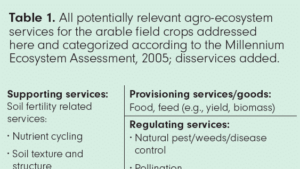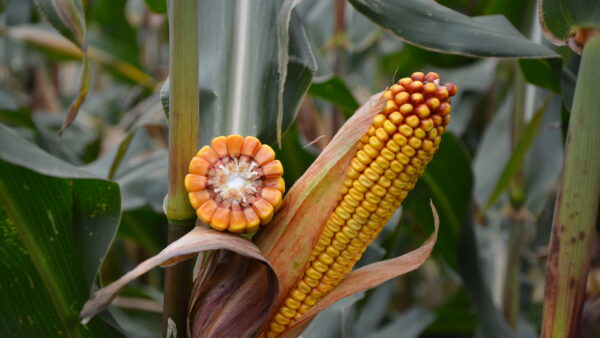Cover crops are valuable tools in crop systems in agriculture and also governmental instruments to reduce leaching of nitrate and promote biodiversity. European countries have different set of rules that farmers have to follow to be in compliance with national legislation. It can be quite a challenge for farmers to navigate in the catalogues of rules and mandatory requirements combined with voluntary schemes to match the goals.
Our soils are a dynamic system composed of living and dead organisms, decomposing and residual organic matter, minerals, water and oxygen. The balance can be affected by conservation practices where we can impact nutrient cycling, water quality and overall soil structure and condition. As cover crops grow, die and break-down, they feed the soil food web and improve soil quality retaining nutrients, adding carbon, increase water holding capacity while reducing runoff and evaporation, hence overall variability against weather extremes.
Cover crops stimulate microbial activity because they supply food (carbon) for the microorganisms to feed on. Microorganisms in our soils use cover crop plant residues to build organic matter and increase nutritional value of the soil. Carbon reserves and actively growing plant roots increase mycorrhizal hyphae creating soil aggregates that act like a net capturing organic matter and soil particles. Aggregate stability builds soil structure and ultimately leads to better nutrient cycling and better movement of water and oxygen. Adding legumes, farmer’s get a source of additional sustainable nitrogen by converting atmospheric nitrogen into nutrients plants can use.
Cover crops can aggressively scavenge and cycle nutrients from deep within the soil profile making them available in the root zone of subsequent crops, improving yields and reducing runoff into sensitive environments. The extensive root systems cling to the top layer of soil creating an interior shield from erosion while top growth minimizes wind and water erosion. Deep burrowing roots break through compacted soil to create pore space improving aeration, water movement and helping soil organisms flourish.
The crop rotation are also benefited in other ways. Cover crops create competition for winter annuals and other weeds by shading them out and preventing them from robbing valuable moisture and nutrients from subsequent cash crops with the potential of lowering herbicide requirements. Most cover crops that suppress weeds during the winter months can consequently reduce nematode populations by causing premature egg hatching, eliminating winter annuals that historically provide a refuge for nematode populations or by containing chemicals that naturally fumigate at-risk soil environments.
Many cover crop species provide both the benefit as soil cover while providing a valuable forage source for livestock. Fall, winter and spring cover crops create environments crucial for wildlife protection and nesting. Additionally, the biodiversity created by many cover crop systems have positive effects on native pollinators.
All these benefits create the opportunity for better yield potential in cash crops, lower input costs and ultimately higher land values. In addition, some countries offer cost-sharing initiatives for this important practice. So, take a break in your soil rotation and discover a world of opportunities in cover crops.








